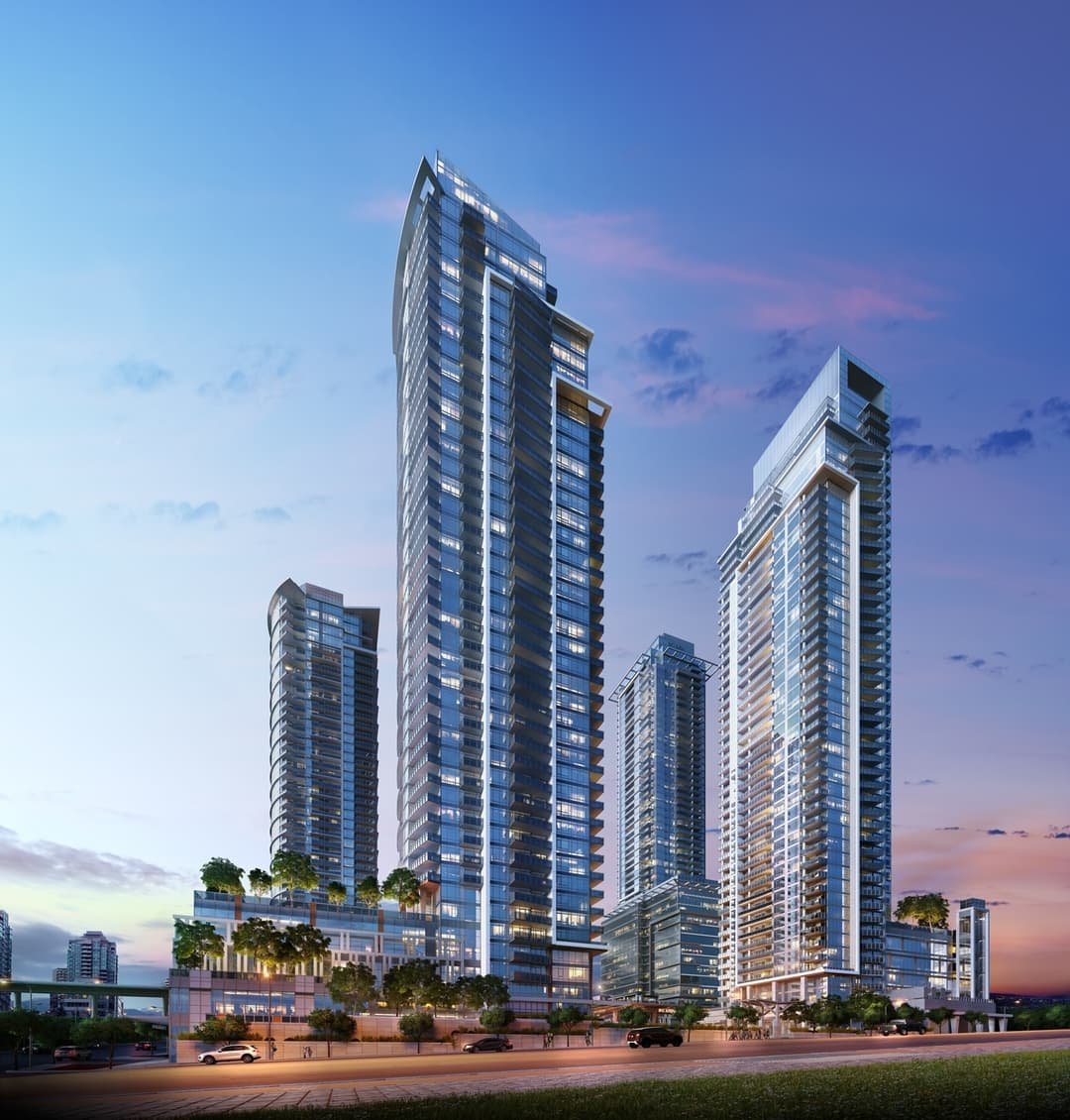Solo District Condo
-
2012 to 2023
-
Appia Developments
-
1,400,000 sqft
-
Multi-stage new construction
In 2010, when Jim Bosa, President of Appia Developments conceived of their flagship mixed use project in North Burnaby BC, The design team placed an emphasis on sourcing a high quality, cost effective, and environmentally friendly heating and cooling solution. With the project scheduled to be completed in four phases over a decade of construction, locating HVAC infrastructure was critically important so that early work that was required for the first phase of construction wouldn’t impact future work. Drilling geo-exchange borefields under each tower as it was being built was a desirable solution to a complex issue that a traditional geo-exchange system drilled from the surface of the property wasn’t suitable for.



Case Study: Solo District
Reaching New Heights in Heating and Cooling
2020
By Mitsubishi Electric
The Challenge
Located in the vibrant community of North Burnaby, British Columbia, just a short drive from Vancouver, Solo District is a mixed-use development that includes four towers with residential, office and commercial space. Jim Bosa, President of Appia Development, the developer of Solo District, had a clear vision – to create a community complete with everything the residents might need, from doctors’ offices to grocery stores to event spaces.
The first of four construction phases was completed in 2015, and phases three and four are scheduled for completion through 2022. During the development process, Appia Development was looking for a heating and cooling solution that was of excellent quality and energy efficiency, while being cost effective during the installation process and throughout the product lifecycle. Ease of operation, future compatibility and reduced cost were also key considerations.
The Solution
Mitsubishi Electric’s Water-Source VRF and Heat Pumps serving the residential, commercial and retail buildings were selected for this development. For the grocery store Mitsubishi Electric’s Hydronic Heat Recovery was selected.
Mitsubishi Electric products were chosen for its flexibility, heat recovery and overall product excellence. The fact that the control systems were all included was also a deciding factor, as traditionally control systems belong to a third party, which makes operation more complicated and leads to ongoing service and maintenance. Mitsubishi Electric’s system also has backward and forward compatibility, meaning the systems can “speak” to older and future systems that may be added to new buildings in the complex. Mitsubishi Electric systems are also excellent at redirecting heat from an area that needs cooling (for example, the kitchen) to an area that needs warming (like the residential hot water).
Another consideration was that Mitsubishi’s Electric two-pipe VRF system is less labour intensive during installation than traditional four-pipe systems. This reduces installation time and costs. To ensure the success of this project and the systems used, Mitsubishi Electric Sales Canada Inc. worked closely with the owner, architect and engineers involved in the design of the mechanical system to earn their trust. Also involved was a third-party utility company that ultimately took ownership of the common space mechanical system components, including the geothermal field and the Citi Multi system.
As the towers range from 41 to 55 storeys in height, Solo District now boasts the tallest building in Canada to use VRF technology. Because of the unique height requirements, Mitsubishi Electric Sales Canada Inc. had the first ever 575-volt condenser system designed, manufactured and delivered to this project. The mechanical design includes a development-scale vertical closed loop geo-exchange system and “ambient temperature” loop with interconnecting capabilities of the individual building hydronic heating and cooling systems. Essentially, this means that the Mitsubishi Electric system can draw energy from virtually any water source, whether it’s a geothermal loop or a traditional boiler chiller.
The Results
The Solo District buildings can now boast that they are the tallest in Canada with a VRF system. After nine years, phases one and two are now wrapped up and the project is considered a success that will be further developed in phases three and four.
Excerpt from 2020 Mitsubishi Electric case studies.

